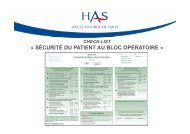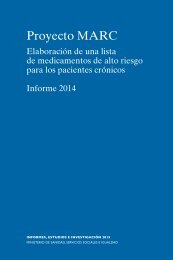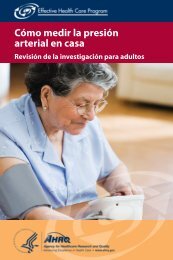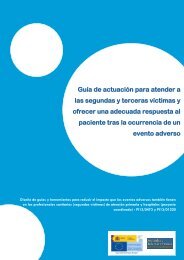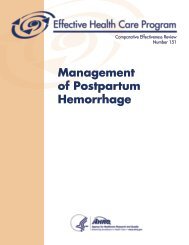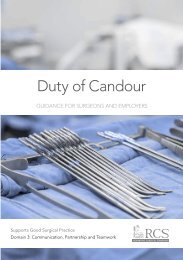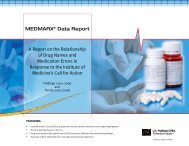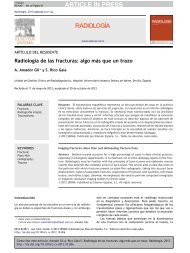for Invasive Procedures (NatSSIPs)
Z3q53
Z3q53
Create successful ePaper yourself
Turn your PDF publications into a flip-book with our unique Google optimized e-Paper software.
OFFICIAL<br />
3. Job plans and establishments must take into account the time required to set<br />
up, calibrate and per<strong>for</strong>m safety checks on specialist equipment, and <strong>for</strong> staff to<br />
participate in briefing, debriefing and other key safety steps in LocSSIPs.<br />
4. Day-to-day work<strong>for</strong>ce plans must be based upon the expected duration of the<br />
activity, and the LocSSIPs must be specific about processes <strong>for</strong> members<br />
leaving or joining the clinical team part way through an activity, and the steps<br />
necessary to ensure patient safety when teams hand over care.<br />
5. The LocSSIPs should ensure that all members of the procedural team practise<br />
within the limits of their proven and agreed competence.<br />
6. The LocSSIPs must define the number and skill-mix of staff, with an appropriate<br />
ratio holding a specific primary or postgraduate practice qualification applicable<br />
to the procedural area, <strong>for</strong> example a qualification in perioperative practice. This<br />
may not necessarily reflect current staffing and, if it does not, a documented<br />
action plan must be created in order to achieve and maintain the stated number<br />
and skill-mix within a reasonable time.<br />
7. The LocSSIPs must address work<strong>for</strong>ce needs <strong>for</strong> procedures that take place<br />
outside of normal working hours. The work<strong>for</strong>ce standards set <strong>for</strong> out-of-hours<br />
work should be no less than those set <strong>for</strong> equivalent procedures per<strong>for</strong>med<br />
during standard working hours. The LocSSIPs should provide guidance on<br />
escalation processes and actions to be taken should a clinical situation<br />
overwhelm available resources.<br />
8. The LocSSIPs must take into account the supervision of students and trainees,<br />
including:<br />
• Doctors in training<br />
• Student ODPs<br />
• Undergraduate and postgraduate nurses and midwives<br />
• Learners in other supporting roles<br />
9. The LocSSIPs must specifically address the induction requirements of nonsubstantive<br />
staff in the procedure team. Allocation of staff to clinical duties must<br />
reflect a risk-managed mix of substantive (or familiar and experienced staff) and<br />
non-substantive staff.<br />
10. The theatre manager, or equivalent individual <strong>for</strong> each procedural area, should<br />
confirm the availability of an appropriate work<strong>for</strong>ce <strong>for</strong> each operating theatre or<br />
invasive procedural area be<strong>for</strong>e the start of any list or session. It may<br />
occasionally be necessary to per<strong>for</strong>m an emergency procedure with a<br />
work<strong>for</strong>ce that does not comply with the LocSSIP. When this happens, it should<br />
be reported as a safety incident and should be should be reviewed through<br />
local governance processes.<br />
11. If any member of the procedure team is concerned about whether the assigned<br />
work<strong>for</strong>ce is sufficient in number or skill-mix <strong>for</strong> the safe conduct of the<br />
proposed clinical activity, they should bring this to the attention of the theatre<br />
manager or equivalent individual <strong>for</strong> the procedural area. The theatre manager<br />
or equivalent should respond to such concerns and assess the situation, and<br />
26



